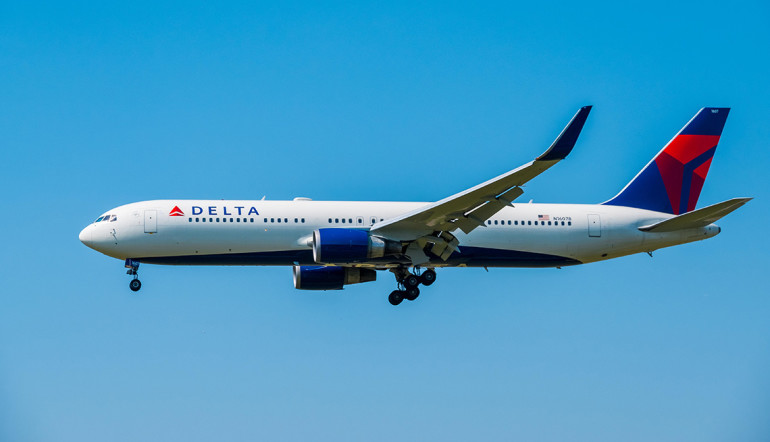Sponsored Listings:
Boston flyers have enjoyed a ramp-up in connectivity over the past five years as JetBlue and Delta have grown their presence there along with increasingly aggressive levels of competition.
Moreover, it appears that Beantown’s boom times will continue, with both airlines viewing Boston Logan as a strategic base for transatlantic operations.
Between September 2015 and the September that just ended, Logan reported a 15% growth in total departures, according to the flight data analytics company OAG. And over the past five years, Logan has grown 50% faster than the average airport in the U.S.
Driving that expansion have been Delta and JetBlue, the airport’s leading carriers. Since 2014-15, JetBlue has increased its Boston departures by 31%, while Delta has grown departures by 54%.
This summer, JetBlue offered 175 peak daily departures from Boston to more than 70 destinations. Delta is now offering approximately 150 daily departures from Boston and has serviced as many as 52 destinations from Logan Airport in a single day.
JetBlue, which counts Boston as its second-largest base after New York JFK, currently offers 29% of all departing flights from Logan, an increase from 25% in 2014-15. Delta’s Logan share is 19%, up from 15% four years ago.
All signs point to a deepening battle for supremacy at Logan.
JetBlue and Delta have each been clear about setting a goal to reach 200 daily departures there soon, with Delta president Glen Hauenstein suggesting on the carrier’s July earnings call that it would hit that target by the end of 2020. Achieving that goal will be facilitated by Delta’s latest win in Boston, which came on Sept. 23 when it added five gates, giving it control of all departures and arrivals at the airport’s Terminal A.
In June, Delta designated Boston as its newest hub.
Collectively, OAG senior analyst John Grant wrote in a recent blog post, Delta and JetBlue plan to add more than 15,000 seats per day from Boston by the end of 2021.
“With such growth, and even allowing for large proportions of new connecting traffic being developed, the ultimate winner will inevitably be the traveler,” Grant said.
Carlos Ozores, an aviation analyst for the ICF consulting firm, said there are several reasons why Boston was ripe for the attention it is receiving from air carriers. The city anchors the 10th-largest metropolitan area in the U.S., according to 2018 U.S. Census estimates. And buoyed by strong technology and finance sectors, its per capita income is the third highest among the country’s 25 largest markets.
Nevertheless, in part because of its proximity to New York, Boston had largely been left out of the hub-dominated networks of American, United and Delta.
That combined dynamic has left space for JetBlue and Delta to serve a large base of business and well-heeled leisure travelers with limited competition. Boston, which sits closer to Europe than the other major East Coast cities, is also ideally situated as a base for transatlantic traffic.
As such, both airlines have made Europe an important part of their Boston strategy. This year, Delta added Lisbon and Edinburgh, Scotland, to its Boston offerings. Next year, it will launch service from Boston to Rome and Manchester, England, as well as to London Gatwick in partnership with Virgin Atlantic. It will also add an additional daily Paris flight. Delta also serves Boston from Amsterdam, London Heathrow and Dublin.
This summer, Delta was using Boston as a connecting point between Europe and other U.S. locations for nearly 1,000 customers per day, CEO Ed Bastian said in July, which is the primary reason the carrier designated Logan as a hub.
JetBlue, meanwhile, has designated Boston and JFK as the two airports from which it will begin Europe service, with flights to London in 2021. And Boston almost certainly figures into the carrier’s plans to push farther into Europe beginning in 2023.
JetBlue will operate its Europe flights on new-generation Airbus A321neo variants. But while those planes are being built for increased range, they won’t go as far as modern wide-body aircraft, making Boston’s proximity to Europe especially strategic for JetBlue.
Delta, too, relies heavily on smaller, single-aisle planes for Europe flights from Boston.
On domestic routes, JetBlue and Delta are likely to use the new Airbus A220 extensively in Boston, Ozores said. The aircraft, the smaller variant of which Delta is flying in a 109-seat configuration, is the right size for a place like Boston, which has lots of originating passengers but still only a limited connecting market, Ozores said. And the A220’s high fuel efficiency as well as its range of more than 4,000 miles make it viable for transcontinental operations.
Delta, which will eventually have 90 A220s in its fleet, is already using the aircraft in Boston. JetBlue has 60 of the larger A220-300 on order.
“That aircraft is going to, I believe, do wonders for Boston,” Ozores said.
Source: travelweekly.com










